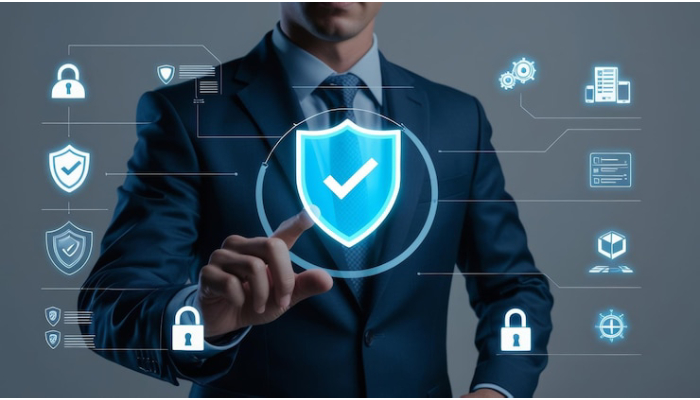
A Security Operations Center (SOC) is a dedicated team that keeps watch over an organization’s digital environment around the clock. Their job involves finding and investigating security threats while responding quickly to avoid damage. They protect various assets like networks, cloud platforms, and even operational technology by using tools such as SIEM, SOAR, and endpoint detection systems. Besides monitoring for attacks, SOC personnel manage vulnerabilities through frequent scanning and patching. They also help protect employees by securing personal data and offering security training to reduce risks like phishing. By combining technology with skilled experts, SOCs play a vital role in keeping both infrastructure and people safe from cyber threats.
What is a Security Operations Center (SOC)?
A Security Operations Center, or SOC, is a dedicated team that works around the clock to monitor and protect an organization’s digital environment. It serves as a central hub where cybersecurity experts keep a close eye on networks, servers, applications, endpoints, cloud services, and operational technology to spot potential threats early. By combining skilled personnel, well-defined processes, and advanced technology, the SOC manages risks in real time to prevent disruptions or data breaches. It provides a comprehensive view of all security events and vulnerabilities, allowing the organization to respond quickly and effectively. Beyond just detecting threats, the SOC coordinates the entire incident response, from identifying the problem to resolving it, helping maintain business continuity, and meeting compliance standards. As cyber threats evolve, the SOC security services adapts its tools and methods to stay ahead, ensuring ongoing protection of both infrastructure and the people who rely on it.

Primary Functions of a SOC
A Security Operations Center (SOC) plays a critical role in protecting an organization’s digital environment through several key functions. First, it continuously monitors security alerts and logs to identify potential threats early, helping to catch suspicious activity before it escalates. When an alert is detected, the SOC investigates incidents to understand their nature, origin, and possible impact, which guides how the threat should be handled. Prompt threat mitigation is essential, often involving isolating affected systems and removing malicious elements to stop further damage. Beyond immediate response, the SOC conducts root cause analysis to uncover vulnerabilities and prevent similar issues from recurring.
Maintaining up-to-date threat intelligence feeds is another core function, allowing the SOC to stay informed about new attack methods and adapt defenses accordingly. Regular vulnerability assessments help identify weaknesses in systems, with patching efforts prioritized based on risk to reduce exposure. The SOC also manages security policies to ensure consistent enforcement across the organization and supports compliance audits by providing necessary documentation.
Key Roles Within a SOC
A Security Operations Center relies on a mix of specialized roles to function effectively. The SOC Manager oversees daily operations, makes sure the team’s efforts align with business goals, and manages resources to keep the center running smoothly. Security Analysts are on the front lines, continuously monitoring alerts, analyzing data, and escalating incidents based on their severity. Incident Responders jump into action when a threat is detected, containing attacks and coordinating the remediation process to limit damage. Security Engineers and Architects design, build, and maintain the security infrastructure and tools that enable detection and defense throughout the network. Threat Intelligence Analysts collect and analyze data on emerging cyber threats and attacker tactics, providing valuable context that guides the SOC’s response strategy. Forensic Investigators dig into compromised systems after an incident, reconstructing attack timelines to understand how breaches occurred and to prevent future ones.
Core SOC Tools and Capabilities
Security Information and Event Management (SIEM) systems form the backbone of SOC operations by collecting and correlating security event data from diverse sources like networks, servers, and applications. This aggregation helps analysts spot patterns and anomalies that might indicate an attack. Intrusion Detection and Prevention Systems (IDS/IPS) complement SIEM by monitoring network traffic in real time, alerting on suspicious activity, and blocking threats before they cause damage. Endpoint Detection and Response (EDR) tools focus on individual devices, continuously monitoring endpoints to detect and respond to threats such as malware or unauthorized access. To enhance efficiency, Security Orchestration, Automation, and Response (SOAR) platforms automate repetitive tasks like alert triage and coordinate response actions across different tools, allowing SOC teams to react faster. Threat intelligence platforms gather data from both internal logs and external sources, giving SOC analysts context about emerging threats and enabling proactive defense strategies.
Common Challenges Faced by SOCs
Security Operations Centers face several ongoing challenges that impact their ability to protect organizations effectively. One major issue is the high volume of alerts generated daily, which can overwhelm analysts and lead to fatigue, increasing the risk that critical threats go unnoticed. The shortage of skilled cybersecurity professionals further limits SOC capacity, making it difficult to maintain around-the-clock monitoring and timely responses. Many SOCs also struggle with fragmented or outdated security tools that don’t integrate well, slowing down investigation and containment efforts. The expanding attack surface, fueled by cloud adoption and the proliferation of IoT devices, adds complexity to monitoring and increases potential vulnerabilities. Balancing automation with human judgment remains tricky: while automated systems can speed up detection, they cannot fully replace the nuanced decisions analysts must make. Additionally, SOC teams must keep up with rapidly evolving attack techniques and threat actors, requiring continuous learning and adaptation.
Different SOC Delivery Models
Security Operations Centers (SOCs) come in various delivery models, each designed to fit different organizational needs, budgets, and security goals. An In-House SOC is staffed entirely by internal employees, offering the highest level of control and customization. This model allows organizations to tailor security monitoring and response precisely to their infrastructure but requires significant investment in personnel, technology, and ongoing training.
SOC as a Service (SOCaaS) is an outsourced model where specialized providers deliver scalable monitoring and incident response. This approach reduces upfront costs and leverages external expertise, making it ideal for organizations lacking the resources or desire to manage a full SOC internally. However, it may offer less customization and can limit internal knowledge retention.
Best Practices for Enhancing SOC Performance
To boost SOC performance, integrating AI and automation is essential. These technologies help reduce alert fatigue by filtering false positives and speeding up investigation times, allowing analysts to focus on real threats. Regular training and certification keep the SOC team’s skills up to date, which is critical given the fast-evolving threat landscape. Encouraging collaboration between SOC, IT, legal, and executive teams ensures that security efforts align with business goals and compliance requirements. Adopting recognized security frameworks such as NIST or ISO 27001 provides a structured approach to SOC operations and helps maintain consistent standards. Developing and routinely testing incident response plans improves the team’s readiness and ability to respond effectively when incidents occur. Maintaining comprehensive visibility across all IT assets, including cloud environments, prevents blind spots that attackers could exploit. Regularly updating detection rules based on current threat intelligence ensures the SOC can identify emerging attack methods. Using metrics and KPIs to measure SOC effectiveness helps identify weaknesses and guide continuous improvement. Integrating threat hunting as a regular, proactive activity uncovers hidden threats before they cause damage. Finally, secure communication channels within the SOC and with external partners protect sensitive information and maintain trust during incident handling and collaboration.
The Future of Security Operations Centers
Security Operations Centers are evolving rapidly to meet the growing complexity of cyber threats and technological advancements. One major trend is the increased use of generative AI, which helps analysts not only detect threats faster but also make smarter decisions by providing context and recommendations. AI-driven tools are becoming more integrated, enabling SOCs to shift from reactive responses to proactive and predictive security measures. These systems learn and adapt over time, creating adaptive SOC environments that evolve alongside attacker tactics.
Automation will play a bigger role in reducing manual tasks that often cause delays, allowing security teams to focus on high-impact work. Cloud-native SOC tools are gaining popularity for their ability to scale easily and offer more flexibility across hybrid environments. This shift also supports broader collaboration frameworks, encouraging better information sharing between SOC teams, industry groups, and law enforcement to strengthen collective defenses.